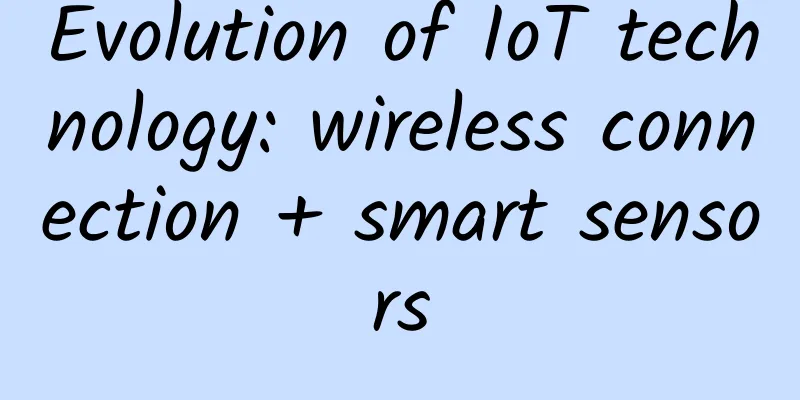Evolution of IoT technology: wireless connection + smart sensors

|
The Internet of Things is a term for connected embedded systems that brings together two evolving technologies, wireless connectivity and smart sensors. Combined with the latest advances in low-power microcontrollers, these new “things” are connected to the Internet easily and cheaply, ushering in the second industrial revolution for humanity. Connected embedded systems are small microcontroller-based computers that do not require an interface to access the system, and humans interact with the system using sensors or other advanced detection mechanisms. Sensors collect data and determine whether the data is valuable, forming the main part of this system, and the term "Internet of Things" means that these sensors are networked, through the use of WiFi or Ethernet networks, and can also be implemented using protocols such as ZigBee or Bluetooth without an IP address. The choice of network protocol is based on the distribution of nodes and the amount of data collected, and the data is sent through the network to the main center or computer, which then collects and analyzes the data, stores it in memory, and even makes system decisions based on the results of the analysis. IoT sensor node block diagram, including 802.15.4 wireless, A/D converter, analog front end, battery management, Bluetooth, cloud storage, custom wireless, DC/DC converter, environmental sensor, flash memory, memory module, microcontroller, RAM memory, RFID /NFC, photoelectric sensor, power management, smart sensor, video, wireless network. These connected embedded systems are standalone microcontroller-based computers that use sensors to collect data. The systems are networked together typically via a wireless protocol such as WiFi, Bluetooth, 802.11.4 or a custom communication system. The choice of network protocol is based on the distribution of the nodes and the amount of data collected. Key nodes of modern IoT require some form of data security encryption, the most common being AES256. This is critical to help break security, and it should be noted that this design is only for reference design and product recommendations, and compatibility and interoperability are not currently tested. |
<<: Whether you like it or not, the era of paid video is coming
Recommend
Official account: The Course on the Monetary Emotion Cycle of Speculative Capital
Course Description This course focuses on explain...
How to optimize and quickly increase the number of app store users?
On my first day at CallApp, the CEO gave me an ex...
If women stay up past 12 o'clock, they will secrete testosterone and become more masculine? The truth is...
"If girls don't sleep past 12 o'cloc...
GAC Aion AION Y, a 100,000-level high-tech first-class cabin, officially goes on pre-sale starting at 105,900 yuan
On March 29, the "AION Y YES! Urban Trendy S...
National Hypertension Day | You must not know these 5 misunderstandings about lowering blood pressure
Hypertension is the most important risk factor fo...
Wandering Emotional Captain "Specializing in Love Nuclear Weapons"
Course Catalog 1. How to quickly become a high-qu...
4 analyses of explosive user growth!
In fact, viral marketing was a growth tool in the...
Want to design UI for iPhone X? Here are 11 design tips
When designing UI for iPhone X, the completely di...
B station marketing promotion methods and strategies!
Brand marketing is a long-term thing. The communi...
my country lacks 4K TV standards: low-cost panels flood the market
As early as 2014, the China Household Electrical ...
What is the difference between underwear that costs 20 yuan and underwear that costs 200 yuan?
Underwear plays an important role in shaping wome...
Can gray hair turn black again? The doctor's answer is unexpected
I believe that not many people like their gray ha...
I feel dizzy when I wear a turtleneck sweater. It turns out there’s something wrong with my neck!
Review expert: Yin Tielun, deputy chief physician...
Best time to promote the most popular app categories in the App Store in 2015
A recent research report shows that weekends are ...
How much does it cost to customize a marriage and love app in Bayinguoleng?
The factors affecting the quotation of customized...









